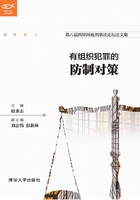
六、结论
研究发现,应用整合犯罪学概念,不仅有助于人们了解涉毒恐怖犯罪所涉及的问题范畴,认识其所复合的不同层次动机、社会组织与结构关系之犯罪特性;更有意义的则是,基于这整合模式的研究途径,将有助于跨部门合作、多领域整合的制度创新。
目前全球对恐怖主义并无一致之定义,固然有其现实因素,但却不能阻止防制恐怖主义之合作。相对的,即使台湾地区仍非恐怖主义直接袭击之目标,若因不了解恐怖主义新兴情势,不仅可能使得反恐刑事政策或亚太区域安全上出现漏洞,甚至让台湾地区因而被边缘化。质言之,当吾人认知到一般的毒品、人口、武器贩运或洗钱犯罪案件,已系涉毒恐怖犯罪的远程或易变行为样态时,也就意谓其扩溢危害已成为共同现象,该所谓的犯罪现象,显然应成为区域或全球的共同安全议题。
暴力恐怖活动、“迁徙圣战”与涉毒恐怖主义之间,同时存在着扩溢路径以及彼此活动所在区域相互关联之特性。然而,在其等路径与区域中,却有不同的易变行为样态,若仍将其片面的视为一般犯罪案件,势必限缩反恐合作与善良治理效能,从而加剧涉毒恐怖犯罪趁机坐大。可见,未来反恐合作效能,还系于如何从整合智谋上防制涉毒恐怖犯罪,以有效防制其危害扩大。故而,论述新兴涉毒恐怖犯罪情势,事实上就是一种防制整合策略,不仅有助于缩减反恐合作的认知差距与障碍,更可促进军事安全、情报执法与犯罪侦查不同部门之间的共同安全观,进而体会本身职能与共同安全之互利内涵,发挥各自影响力与贡献度。
(1) 台湾地区“法务部”调查局两岸情势研析处科长、元智大学社会暨政策科学系兼任副教授。
(2) Amy Zalman, “Types of Terrorism: A Guide to Different Types of Terrorism,” last visited September 21, 2015, http://terrorism.about.com/od/whatisterroris1/tp/DefiningTerrorism.htm.
(3) John R. Wagley, “Transnational Organized Crime: Principal Threats and U. S. Responses,”(March 20, 2006), last visited September 21, 2015, p. 13, “The Library of Congress”, https://www.fas.org/sgp/crs/natsec/RL33335.pdf.
(4) Michael L. Burgoyne, “The effectiveness of counterinsurgency principles against criminal insurgency: the right tool for the job,” Small Wars Journal, February 11, 2012, pp. 2-3.
(5) John P. Sullivan, “Criminal insurgency: narcocultura, social banditry, and information operations,”Small War Journal, December 3, 2012, p. 2.
(6) Rani D. Mullen, “Afghanistan in 2008: state buildingat the precipice,” Asian Survey, Vol. 49, Issue1, 2009, p. 35.
(7) United Nations Office on Drugs and Crime, Addiction, Crime and Insurgency: The transnational threat of Afghan opium, p. 17;Bureau of International Narcotics and Law Enforcement Affairs, “2009 International Narcotics Control Strategy Report: Country Reports—Afghanistan through Comoros,”(February 27, 2009), last visited September 21, 2015, pp. 1-2, “United Nations Office on Drugs and Crime”, http://www.state.gov/p/inl/rls/nrcrpt/2009/vol1/116520.htm.
(8) Gregg Barak, “Integrative theories, integrating criminologies,” last visited September 21, 2015, “critcrim. org”, http://critcrim.org/critpapers/barak_integrative.htm.
(9) 先驱化学物质,系指可流供制造毒品之原料,依其特性分为两类,一类系指参与反应并成为毒品之化学结构一部分者;另一类则为参与反应或未参与反应并不成为毒品之化学结构一部分者。目前在阿富汗常见之毒品先驱化学物质包括:醋酸酐/乙酸(Acetic anhydride)、氯化铵(Ammonium chloride)、盐酸(Hydrochloric acid)、丙酮(Acetone)、酸橙(Lime)、碳酸氢钠/小苏打(Sodium bicarbonate)。United Nations Office on Drugs and Crime,“World Drug Report 2014,”(June 2014),last visited September 21,2015,p.101,“United Nations Office on Drugs and Crime”,https://www.unodc.org/documents/wdr2014/World_Drug_Report_2014_web.pdf.
(10) United Nations Office on Drugs and Crime, “Addiction, Crime and Insurgency: The transnational threat of Afghan opium,”(October 2009), last visited September 21, 2015, p. 101, “United Nations Office on Drugs and Crime”, http://www.unodc.org/documents/data-and-analysis/Afghanistan/Afghan_Opium_Trade_2009_web.pdf.
(11) Bureau of International Narcotics and Law Enforcement Affairs, “2009 International Narcotics Control Strategy Report(INCSR): Country Reports—Afghanistan through Comoros,”(February 27, 2009)p. 1, last visited May 7, 2015, “Bureau of International Narcotics and Law Enforcement Affairs”, http://www.state.gov/p/inl/rls/nrcrpt/2009/vol1/116520.htm.
(12) Bureau of International Narcotics and Law Enforcement Affairs, “2014 International Narcotics Control Strategy Report(INCSR): Country Report, Afghanistan,”(2014), last visited May 7, 2015, “Bureau of International Narcotics and Law Enforcement Affairs”, http://www.state.gov/j/inl/rls/nrcrpt/2014/vol1/222838.htm.
(13) Bureau of International Narcotics and Law Enforcement Affairs, “2014 International Narcotics Control Strategy Report(INCSR): Country Report, Afghanistan. ”
(14) United Nations Office on Drugs and Crime, Addiction, Crime and Insurgency: The transnational threat of Afghan opium, pp. 7 & 18-20.
(15) United Nations Office on Drugs and Crime, Addiction, Crime and Insurgency: The transnational threat of Afghan opium, p. 61;Bureau of International Narcotics and Law Enforcement Affairs, 2009 International Narcotics Control Strategy Report: Country Reports—Afghanistan through Comoros, p. 9.
(16) United Nations Office on Drugs and Crime, “World Drug Report 2015,”(May 2015), last visited September 21, 2015, p. 38, “United Nations Office on Drugs and Crime”, https://www.unodc.org/documents/wdr2015/World_Drug_Report_2015.pdf.
(17) United Nations Office on Drugs and Crime, Addiction, Crime and Insurgency: The transnational threat of Afghan opium, p. 73.
(18) 同上书,p.67.
(19) 同上书,pp.68 & 74-75.
(20) United Nations Office on Drugs and Crime, “World Drug Report 2014,” p. 93.
(21) Amy Zalman, “Types of Terrorism: a guide to different types of terrorism. ”
(22) Moisés Naím, “Mafia state: organized crime take office,” Foreign Affairs, Vol. 91, No. 3, May/June 2012, p. 109.
(23) Jeanne Giraldo and Harold Trinkunas, “Transnational crime,”in Alan Collins eds., Contemporary security studies(Oxford: Oxford University Press, 2010), p. 431.
(24) “土耳其截获23名中国籍ISIS成员”(2015年4月14日),2015年9月21日下载,大公网http://news.takungpao.com/world/roll/2015-04/2971632.html.
(25) Anthony Vinci, “Waiting to Win: from Deterrence to Deferrence in the War on Terror,” pp. 10-11.